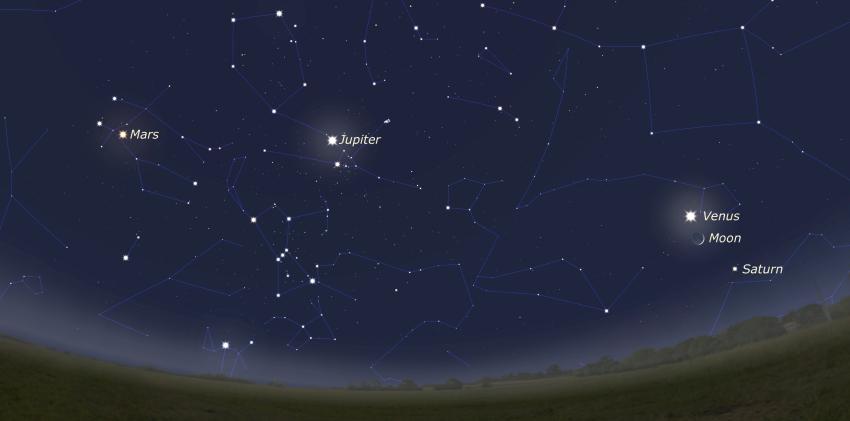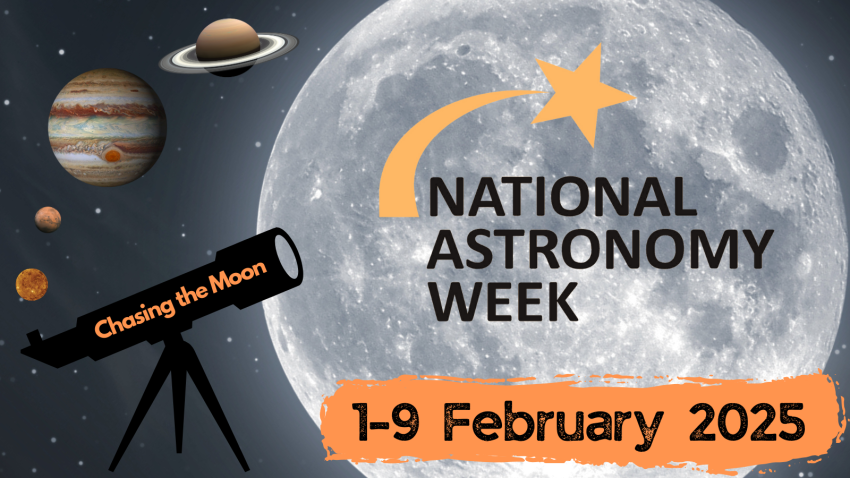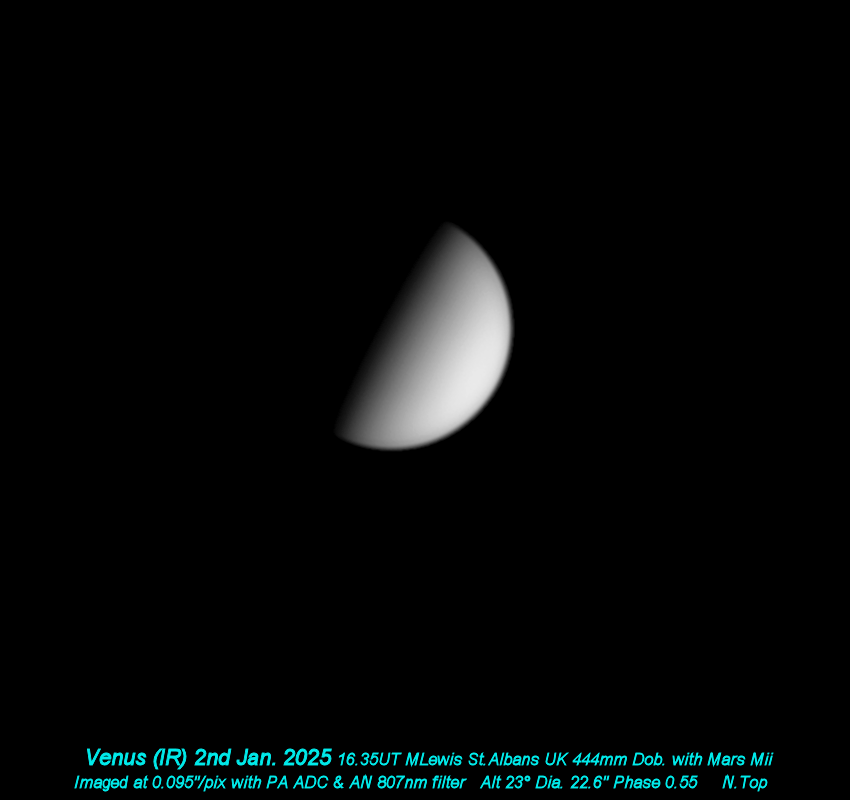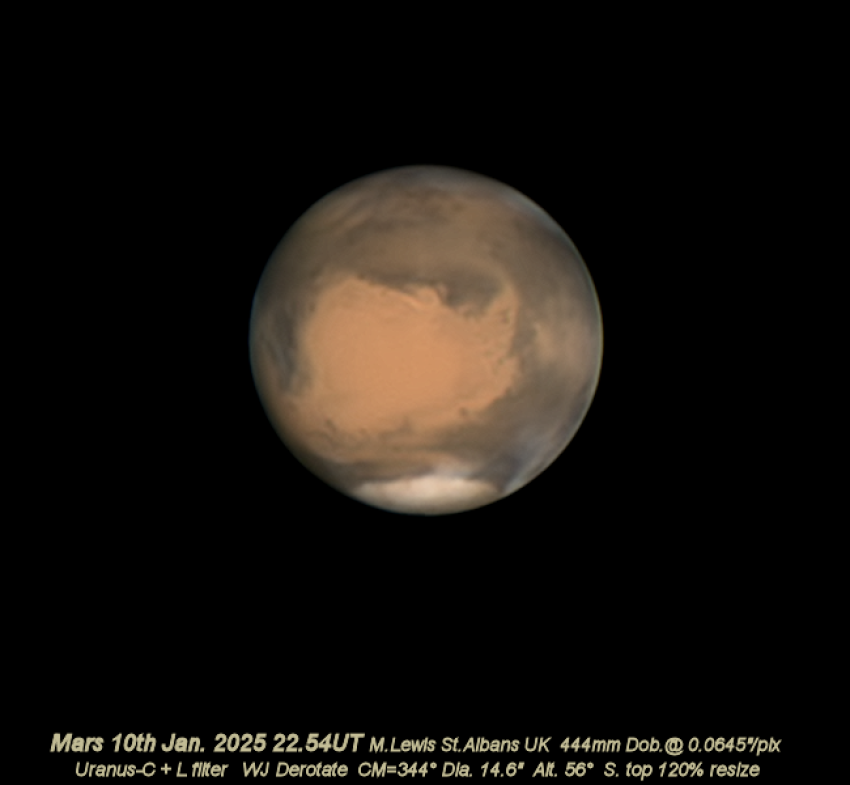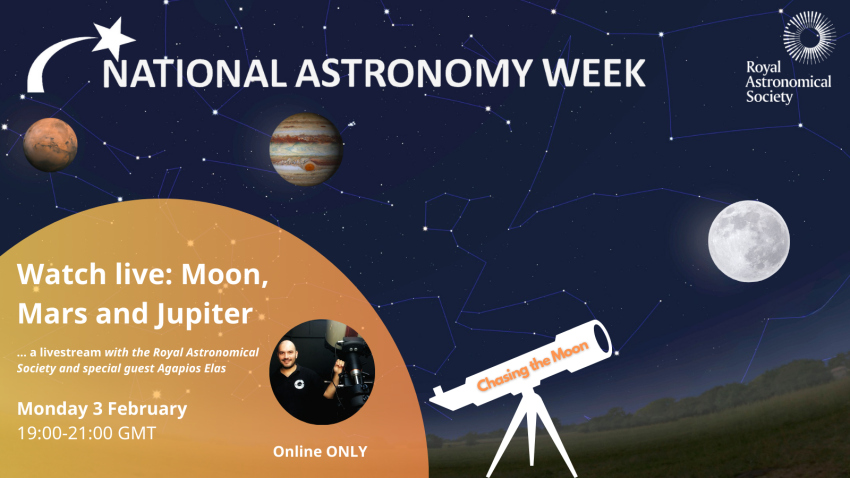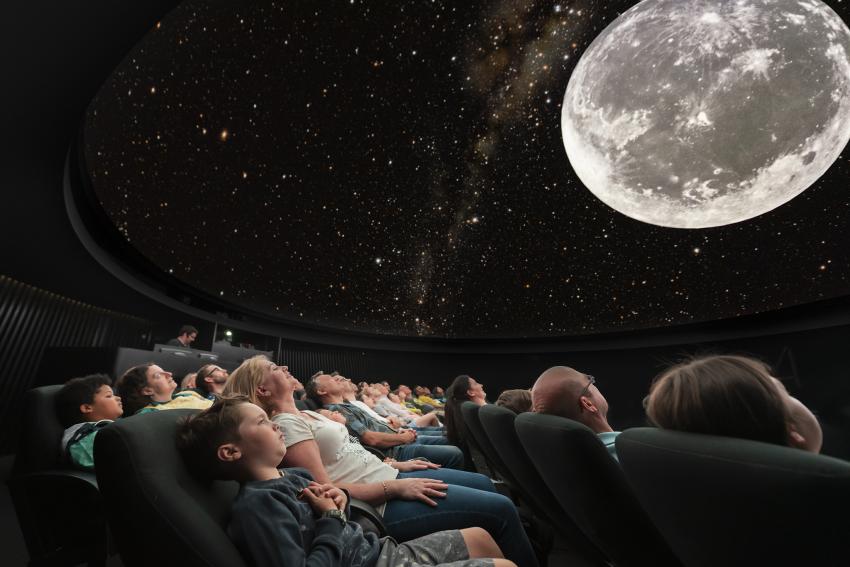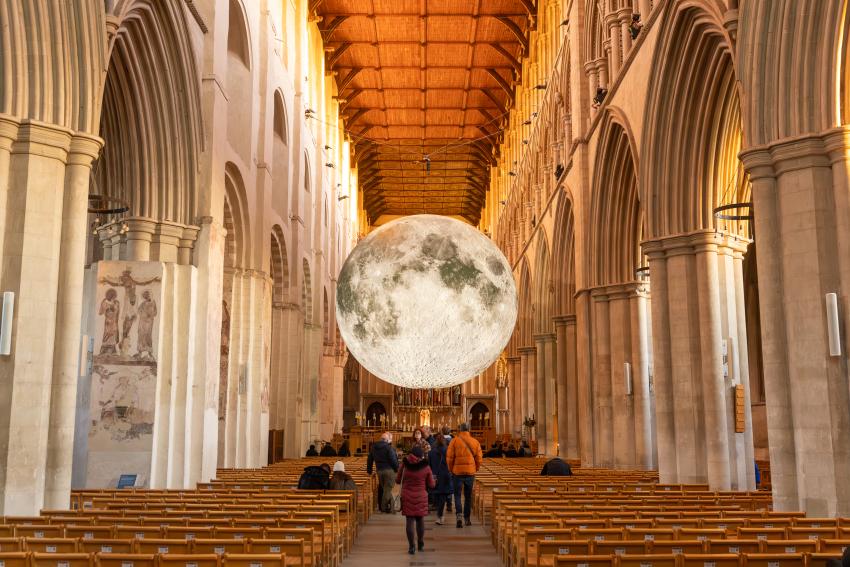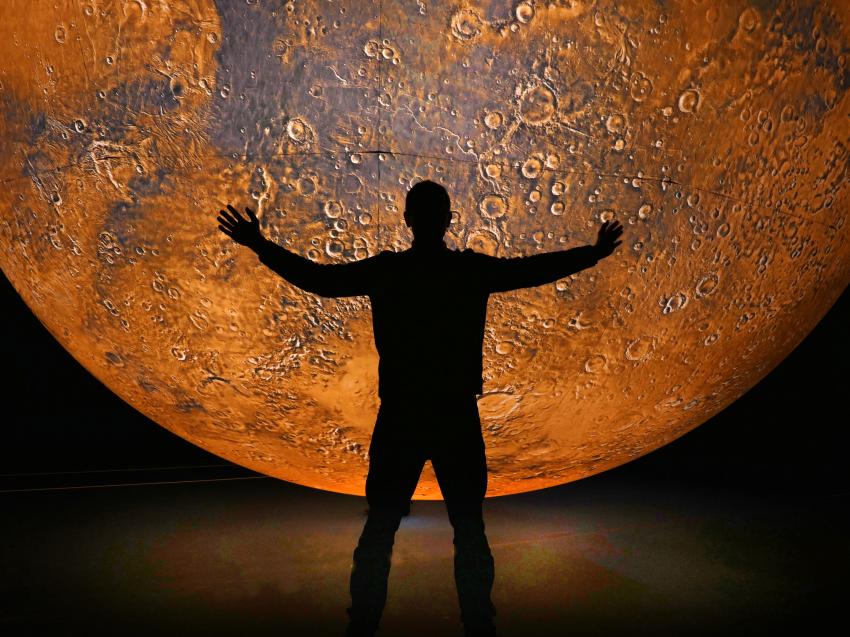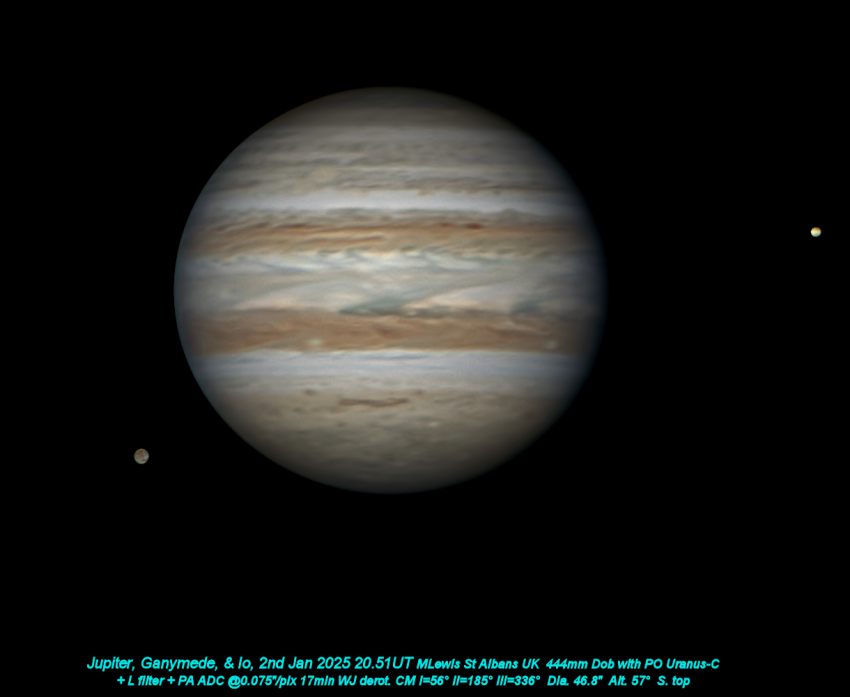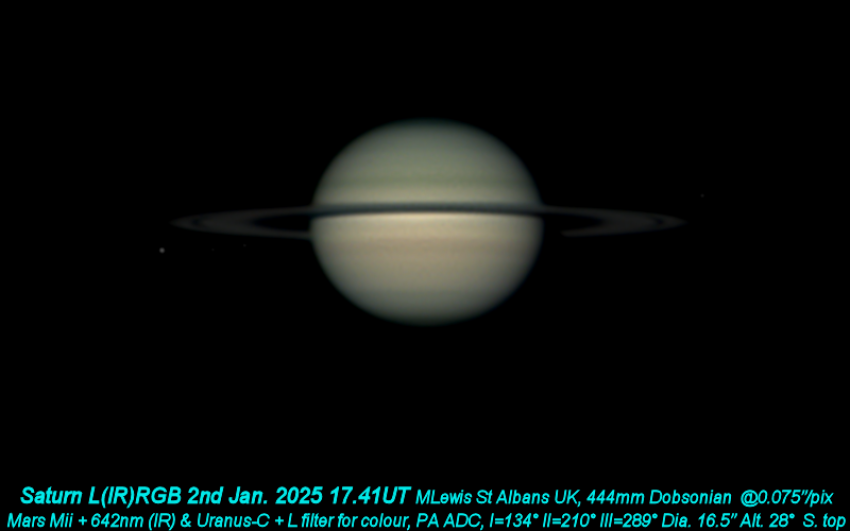One of the best planet parades in almost half a century will illuminate what promises to be an out-of-this-world National Astronomy Week – as Venus, Mars, Jupiter and Saturn all light up the night sky alongside the Moon.
Avid stargazers will be joined by schools, museums and observatories across the country for a jam-packed programme of more than 250 activities and events from 1-9 February, while planetariums will also put on a special show to honour the celebration's theme: 'Chasing the Moon'.
This was chosen because the Moon will go through its phases from a crescent to nearly full during the week, passing each of the brightest planets in turn – except Mercury because it is currently behind the Sun, before coming into view three weeks later.
The rare opportunity to see other worlds so vividly is at the heart of National Astronomy Week, which will officially launch with a stargazing evening at the Observatory Science Centre at Herstmonceux in East Sussex, the historic former site of the Royal Observatory Greenwich.
Throughout the week there will be public-observing events, storytelling, engaging talks about 'killer' asteroids and other astronomical excitement, and plenty of fun for all ages, including families.
Schoolchildren will also get to grill two astronauts about what being in space is like, while astronomical societies up and down the country are holding a variety of special get-togethers to mark the occasion – resources for which can be found here or at the bottom of this page.
Watch from home or your phone
There will be livestreaming of the planets every night of the week through National Astronomy Week's YouTube channel, while telescopes around the UK, and in Spain and Cyprus, will be sending live images.
"The parade of the planets in 2025 is one of the best line-ups we've had for 45 years," said Robin Scagell, chair of National Astronomy Week. "Not since April 1980, when Mars was close and we could see Jupiter, Saturn and Venus, has there been such a fantastic opportunity to see half the solar system in all its glory.
"The aim of National Astronomy Week is to give as many people as possible the chance to see the planets with their own eyes through telescopes – it really is a truly mesmerising sight.
"Don't miss out, because the next opportunity to see four planets so well placed in the evening sky won't come along until 2036!"
Co-presenter of the BBC's The Sky at Night, Professor Chris Lintott, said: "Whether you're already an avid astronomer, a casual watcher of the skies or somebody who doesn't know one end of a telescope from the other, National Astronomy Week is for you.
"This year's theme is Chasing the Moon, as we follow our satellite through its phases from crescent to gibbous over the course of the week. It will also pass by all of the major bright planets – apart from poor little Mercury – providing a signpost to the skies.
"We've got planetarium shows (helpful if it's cloudy), family events, organised stargazing, and we'll even be streaming the planets live to your phone!"
Live from Cyprus
The Royal Astronomical Society (RAS), which is sponsoring National Astronomy Week alongside the British Astronomical Association, the Federation of Astronomical Societies and the Society for Popular Astronomy, will be hosting a special event featuring live footage of the Moon, Mars and Jupiter.
The coverage will be led by author Dr Alexandra Loske and RAS deputy executive director Dr Robert Massey, who will open the evening setting the scene for how our understanding of our nearest neighbour developed over time.
Cypriot astronomer Agapios Elia will then showcase realtime imagery of the lunar surface and planets, including craters, mountains, weather systems on Jupiter and the polar cap of Mars. The free event will be streamed on the Society’s YouTube channel from 19:00-21:00 GMT on Monday 3 February.
Professor Mike Lockwood, President of the RAS, said: "With the help of the Moon and our solar system's brightest planets, National Astronomy Week will give us a chance to shine a spotlight on just how spectacular the night sky can be.
"The array of events being planned up and down the country is wonderful – including stargazing nights, planetarium shows and fascinating talks for all ages.
"And if we're very lucky, the feast of entertainment may even coincide with a repeat performance of the great aurorae that we have seen during this solar maximum!"
The limited edition 'Chasing the Moon' planetarium show will have a special introduction from Scotland’s Astronomer Royal, Catherine Heymans, before a live presenter chases the Moon across the sky past four planets and a treasure trove of stars.
It will run on selected dates at planetariums across the UK, including Glasgow Science Centre, Dynamic Earth (Edinburgh), Armagh Observatory and Planetarium, Sherwood Observatory (Nottinghamshire), National Space Centre (Leicester), Bayfordbury Observatory (Hertfordshire), Royal Observatory Greenwich (London) and the Norman Lockyer Observatory, Sidmouth (Devon).
The Moon up close
Other festivities during the week include a chance to see award-winning artist Luke Jerram's 'Museum of the Moon' artwork at St Albans Cathedral, where it is being exhibited until 15 February.
The installation is a fusion of lunar imagery, moonlight and surround sound composition created by BAFTA and Ivor Novello award-winning composer Dan Jones.
The venue is running a host of other activities, including a programme of Moon-themed music by the internationally renowned St Albans Cathedral Choir on Sunday 9 February at 16:00 GMT.
National Astronomy Week will conclude on Sunday 9 February with a 'Night at the Museum' evening at Norton Priory Museum in Runcorn, Cheshire, which is hosting Jerram's mesmerising installation 'Mars', featuring detailed NASA imagery of the Martian surface.
The museum will also play host to a carefully curated programme of other events over the coming weeks, including concerts, readings, storytelling, talks, meditation and mindful sessions, and a special Martian theme for February half-term activities.
What is National Astronomy Week?
This is the 9th National Astronomy Week since it began more than four decades ago but the first in five years. The events are organised by a committee of UK astronomers whenever there is a significant astronomical event.
Previous National Astronomy Weeks have celebrated the discovery of the planet Uranus (1981), the appearance of Halley's Comet (1986), the 400th anniversary of the invention of the telescope (2009), and close approaches of Mars (2003 and 2020).
Dr Jenny Shipway, National Astronomy Week coordinator, said: "Stargazing is an inspiring, uplifting and calming experience.
"If you haven't looked up at the night sky for a while, this is the perfect chance to enjoy a sky-full of interesting objects, with a treasure trove of interesting stars and planets on display. Just remember to wrap up warm!"
For more information about the programme of events planned, visit: www.astronomyweek.org.uk
ENDS
Media contacts
Sam Tonkin
Royal Astronomical Society
Mob: +44 (0)7802 877700
Robert Massey
Royal Astronomical Society
Mob: +44 (0)7802 877699
Robin Scagell
National Astronomy Week Chair
Tel: 01628 521338
Images and captions
The images above are available on request at press@ras.ac.uk
Free resources
Are you running an event or activity for National Astronomy Week? The resources below can be downloaded for free:
- Moon tracking chart (b/w for printing)
- Moon tracking chart (for web and social media)
- NAW logos
- Social media resources
- Storytelling (video, activities, storytellers)
- Videos to show before events
Notes for editors
About National Astronomy Week
National Astronomy Week (NAW) has been running for almost half a century but is not an annual event. Instead, it is organised when there is a significant astronomical event that will get people talking. The first was held in 1981 to celebrate the discovery of the planet Uranus, while previous NAWs also marked the appearance of Halley’s Comet in 1986, the close approaches of Mars in 2003 and 2020 and the 400th anniversary of the invention of the telescope in 2009.
About the Royal Astronomical Society
The Royal Astronomical Society (RAS), founded in 1820, encourages and promotes the study of astronomy, solar-system science, geophysics and closely related branches of science. The RAS organises scientific meetings, publishes international research and review journals, recognises outstanding achievements by the award of medals and prizes, maintains an extensive library, supports education through grants and outreach activities and represents UK astronomy nationally and internationally. Its more than 4,000 members (Fellows), a third based overseas, include scientific researchers in universities, observatories and laboratories as well as historians of astronomy and others.The RAS accepts papers for its journals based on the principle of peer review, in which fellow experts on the editorial boards accept the paper as worth considering. The Society issues press releases based on a similar principle, but the organisations and scientists concerned have overall responsibility for their content.
Keep up with the RAS on X, Facebook, Instagram, LinkedIn, Bluesky and YouTube.
Download the RAS Supermassive podcast


